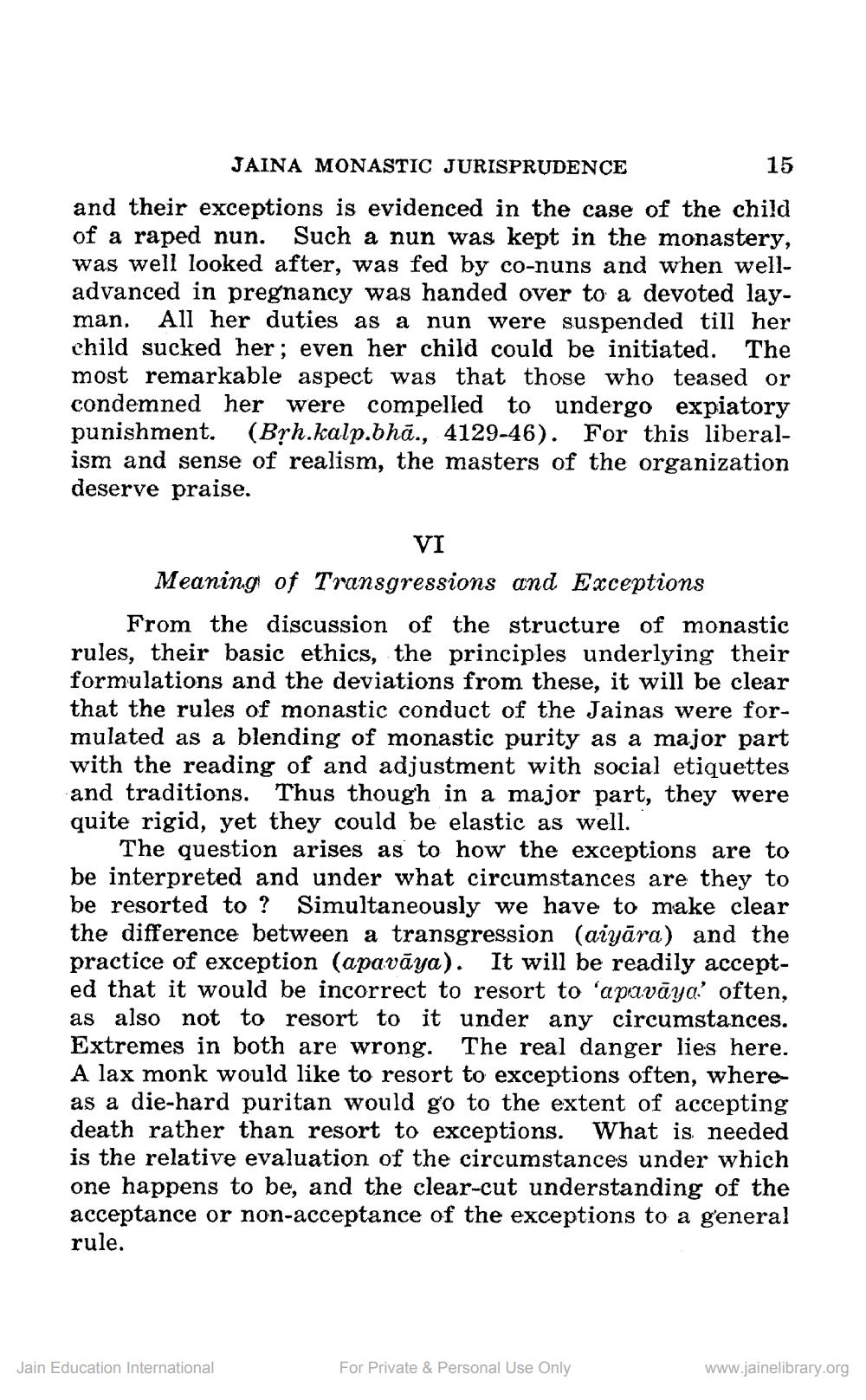________________
15
JAINA MONASTIC JURISPRUDENCE and their exceptions is evidenced in the case of the child of a raped nun. Such a nun was kept in the monastery, was well looked after, was fed by co-nuns and when welladvanced in pregnancy was handed over to a devoted layman. All her duties as a nun were suspended till her child sucked her; even her child could be initiated. The most remarkable aspect was that those who teased or condemned her were compelled to undergo expiatory punishment. (Bịh.kalp.bhā., 4129-46). For this liberalism and sense of realism, the masters of the organization deserve praise.
VI
Meaning of Transgressions and Exceptions
From the discussion of the structure of monastic rules, their basic ethics, the principles underlying their formulations and the deviations from these, it will be clear that the rules of monastic conduct of the Jainas were formulated as a blending of monastic purity as a major part with the reading of and adjustment with social etiquettes and traditions. Thus though in a major part, they were quite rigid, yet they could be elastic as well.
The question arises as to how the exceptions are to be interpreted and under what circumstances are they to be resorted to ? Simultaneously we have to make clear the difference between a transgression (aivāra) and the practice of exception (apavāya). It will be readily accepted that it would be incorrect to resort to 'apavāya' often. as also not to resort to it under any circumstances. Extremes in both are wrong. The real danger lies here. A lax monk would like to resort to exceptions often, whereas a die-hard puritan would go to the extent of accepting death rather than resort to exceptions. What is needed is the relative evaluation of the circumstances under which one happens to be, and the clear-cut understanding of the acceptance or non-acceptance of the exceptions to a general rule.
Jain Education International
For Private & Personal Use Only
www.jainelibrary.org




